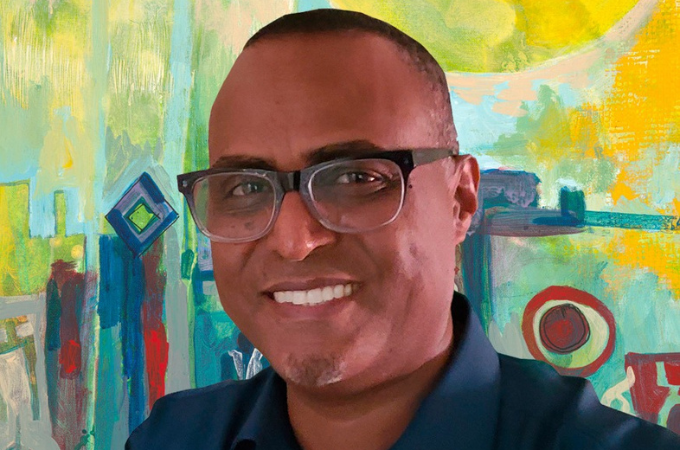
It’s the first week of the New Year, and people’s spirits seem to be at an all-time high. Resolutions boldly made and the year starting fresh, the residents of Asmara walk past seasonally decorated windows and shops with a slight spring in their steps. The New Year always brings new hopes.
It’s the middle of the afternoon and I find myself seated outdoors in Hawakil, a park café not far from downtown Asmara, surrounded by everything green: green leafy trees, green grass, green plastic tables and chairs under green umbrellas sheltering customers from the perennial sunshine. A chilly breeze gently moves the branches overhead, occasionally dropping some leaves onto the grassy fields.
Sitting with me is Yegizaw “Yeggy” Michael, who is taking in the scenery around us, appearing to be in his element. A bespectacled man in his mid-fifties, Yegizaw looks younger than his years, the only hint of middle-age being his salt-and-pepper trimmed hair and goatee. Dressed in a casual navy blue shirt and navy blue jeans, he has an amicable demeanor, approachable yet collected.
It was his request for our meeting to be in Hawakil, where we’d be surrounded by nature. We behold our surroundings for a few more minutes, chatting casually about this and that. Gleeful young newlyweds are scattered around the park, taking aesthetic wedding photographs with the greenery as their backdrop. “There is nothing more peaceful than being surrounded by nature,” Yeggy sighs, sipping from his steaming cup of tea. His words are soft-spoken and exude a sense of tranquility.
Yegizaw, known to most as Yeggy, is a man of many talents. Based in Seattle, he is an acclaimed Eritrean-American visual artist who operates skilfully through various mediums – canvas oils and acrylics, mosaics and frescoes, as well as public art made of recycled and upcycled wood, stone and glass. With 200 solo and group exhibitions across three continents, he is also a respected artist in the Public Art genre – an art genre that is visually and physically accessible to the public, like murals, sculptures and statues – with an artistic footprint that extends throughout Seattle, where he has installed numerous public pieces during his two decades of residence.
As we sit enjoying the view, I ask Yeggy about his artistic journey thus far. He begins by recounting his early years growing up in Addis Ababa, Ethiopia, where he attended the prestigious Addis Ababa Art School (now Alle School of Fine Arts and Design). Drawn to mosaics and frescos, he honed his artistic techniques for three years before his untimely exodus to Kenya in 1990 for fear of persecution by the Dergue regime – an unfortunate reality experienced by many Eritreans living in Ethiopia at the time.
Nevertheless, despite being a fresh immigrant, young Yeggy held steadfast. He continued pursuing art and, in the span of a few years, began traveling internationally, exhibiting his work in Kenya, Uganda, Austria and even post-independence Eritrea (where he lived for a couple of years), until he was invited to the United States for International Artist-in-Residence Programs by no less than four organizations: Africa World Press in New Jersey, Griffis Art Center in Connecticut, Pennsylvania State University in Pennsylvania, and Smith College in Massachusetts.
Curious about his prolific body of work, I ask what inspires him. Yeggy smiles, “I think my process plays a big part. You see, painting is a meditative experience for me. When I am in the process of creating, my mind quiets down, and every conscious thought, every worry, every fear fades away so that a deeper part of me – call it my heart or my soul – can express itself freely.” For the artist, it’s the process of creating that’s most meaningful, so much so that the first impulse to pick up a brush and start a new painting is, really, a craving to quiet his mind and remove himself from the confines of time and space.
I’m curious how he manages to remove his mind from the process and still create paintings that are not only coherent, but also authentically his. “My life experiences live within all parts of me,” Yeggy insists. “I don’t have to actively think about them to be able to channel them in my art. I believe my life experiences exist not just in my mind, but are also carried in my body and my soul. So even in those moments where my mind is still, that which makes me who I am is still reflected on the canvas”
Yeggy doesn’t claim to adhere to a particular style (other than subscribing to the general modern contemporary abstract art), but as I leaf through some of his paintings, there appear to be some stylistic and thematic similarities, apparent even to a casual spectator like myself. “Art is very much like a language,” he explained patiently. “Just like you’d recognize someone by the way they speak, so too can you recognize my artwork through the elements I use, be it my colors, my forms, and the recurring motifs in my work.”
Characterized by vibrant colors, his paintings often display a blend of abstract natural landscapes and anonymous human figures, often in recognizable traditional Eritrean attire. In many of his paintings, I spot common motifs he employs, namely trees depicted in the shapes of circles and ovals (all in vibrant hues) and what seem like random Geez letters hiding in plain sight, infusing the paintings with a sense of geographical and cultural identity where no real, tangible place is indicated. I look at Yeggy to get more sense about the letters – maybe a hidden note to decipher? “I like to sneak in Geez letters in all my works,” he responds with a mischievous smile and a playful glint in his eyes. “Sorry to disappoint, but there’s no secret message there.”
The artist shifts in his seat before continuing, “I lived in Ethiopia, Kenya, Europe, Eritrea and now the US. So, my experiences are from all over, and my identity, who I am, is an assortment of all of these different Qememat – all these different spices. And that’s reflected in my art – especially if you look at the African symbolism.” As I scroll through the pictures of paintings on his phone, one in particular catches my eye, Circle of Peace.
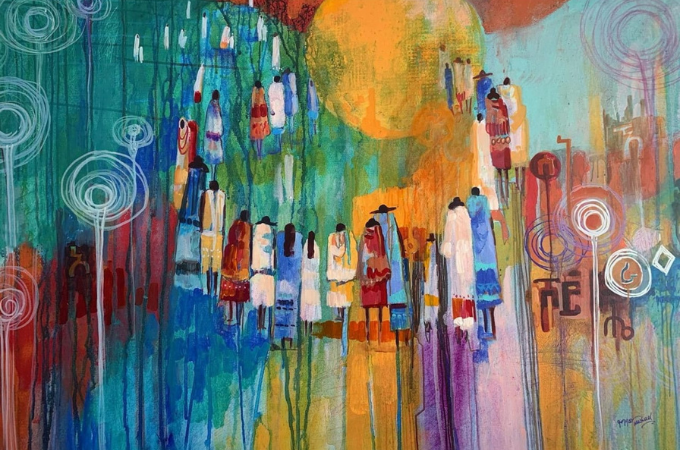
The painting depicts a long line of some forty African people all standing in an abstract, colorful backdrop; Habesha men with their traditional white Gabi and Habesha women with distinctive traditional white Zurya’s and Netsela’s adorned with colorful Edyat, some braided in Gilbich. The distant figures all have their backs to the observer and the snaking queue they form seems to make its way towards a bright yellow circle – a light, I assume. I notice the color palette transition throughout the painting, from cold hues of blue and green to the warm tones of yellow and orange: is it in tandem with the people’s movement? Does the transition of colors tell a story? And if so, does it signify a people’s journey from darkness to light? From turmoil to peace? But what do I know? I’m no art critic.
Regardless of the painting’s underlying meaning, one thing I’m sure about is the way it makes me feel. Looking at it, I understand what Yeggy was saying about meditation, because through his own creative process, he managed to impart in the painting a real sense of calmness and serenity. When I express this aloud, he nods approvingly and replies, smiling, “I get that feedback a lot, actually. Most people who come to see my work in exhibitions tell me that my paintings have a calming effect on them.
And what of messages he wants to convey with his art? “The truth is, I never paint to convey a message,” he shares. “Of course, that’s not to say my paintings don’t carry any; just that I don’t set off with that goal in mind. I never have a concrete plan for what I’m going to paint – or what I’m trying to say – before I start painting”
But this is true only of his paintings, not his public works of art. “With public art, the process is entirely different: I have to do a lot of research, I have a lot of things to consider, so my mind is always at work.” When designing a public piece, one has to consider many important factors: from the values and needs of the community where the public art is set to be installed, to technical matters like durability, sustainability, safety and restoration. “With public art, you have to first identify the kind of art that would best represent the community in mind. You work with the public institutions that oversee and fund your project, and with contractors to install it. The artist’s role is to be the creative force behind the piece, but the overall process heavily involves teamwork. So, there’s quite a lot of pressure because you have so many expectations to meet,” he emphasizes.
And yet, Yeggy also seems to thrive in that environment. In 2016, he was awarded a Design Excellence Award by the Seattle Design Commission for his piece Motion, installed on Mapes Creek: 450 disks of colored concrete and stainless steel that depict the flow of the stream that passes underneath the sidewalk. In 2022, he was commissioned to do a piece for the Department of Transportation in Washington, what he named “Piece of Motion,” and the year before that, he was one of eight artists selected to design public art for Midtown Square, on 23rd & Union, a major intersection in Seattle. His was the largest display – a collection of vibrantly colored cedar wood totems, designed with heavy African symbolism.
When I ask what the overarching theme of his complete body of work is, he takes a minute to lean back on his chair and contemplate. “I think my bio online summarizes it quite nicely: my vision as an artist is to provoke questions about natural cycles, provide a sense of place and reflect the movement of time.” Perhaps seeing the blank expression on my face, he chuckles, “Maybe the statement is a bit abstract.” He takes another minute to think of a way to better explain it. “Take for example,” he starts, conjuring a picture on his phone, “Piece of Motion, the one I made for the Washington State Department of Transportation.” In the picture, I see two large woodworks hanging on adjoining walls. The works are a combination of wood and metal, with vibrant, circular mosaics in the center, creating a captivating color contrast.
“This is my take on the intricate relationship between the natural and the manmade. Wood represents natural cycles for me: trees are planted, they grow, and are cut down by man to be turned into various things, until such time that everything disintegrates and it all goes back to the ground. However long it takes, it represents a cyclical pattern. On another level, the artwork also represents the recycling and upcycling of waste material, which is what this piece is made of. Part of my work as an artist is to provide my audience with a sense of place, and I do that by reinterpreting the abstract and the reality of the cyclical nature of things.”
And as for the movement of time? “Well,” Yeggy says with a shrug, “Time is in the wood itself, and it’s in the mosaic. Circles represent never-ending time. The piece tells time because pattern, in a sense, tells time. A pattern is only a pattern within the temporal dimension.”
The sun starts to set, giving the open sky a pinkish-orange tint. All the newlyweds and their photographers are long gone by now, and we are of the few people still sitting in the open space, now considerably colder.
“With Visual Rhythm, though, the theme is different,” he continues, alluding to his piece on Union & 23rd. The area where Visual Rhythm is found was, for decades, a vibrant neighborhood predominantly inhabited by African-Americans. Now gentrified, the area’s cultural and historical significance was sought to be preserved and displayed through contemporary artwork. Which is where Yeggy comes in. “I wanted to create artwork that honored Black people, and I decided to do that by creating an artistic timeline of the 170 years of African-American residence in Seattle.”
Yeggy’s idea was inspired: he created 17 uniquely designed 4×4 inch cedar wood totem poles of varying lengths, one for every decade. “Every piece is unique and representative of that period. I did extensive research on Black history in Seattle for every single one of those decades; then I designed each totem to pay homage to that history.” The result: a timeless monument of remembrance that honors generations of Black people too often overlooked. The artist managed to accomplish this by linking colors with socio-economic climates: cold colors represent times of turmoil and suffering for the African American people, while warm colors indicate times of hope, progress and freedom.
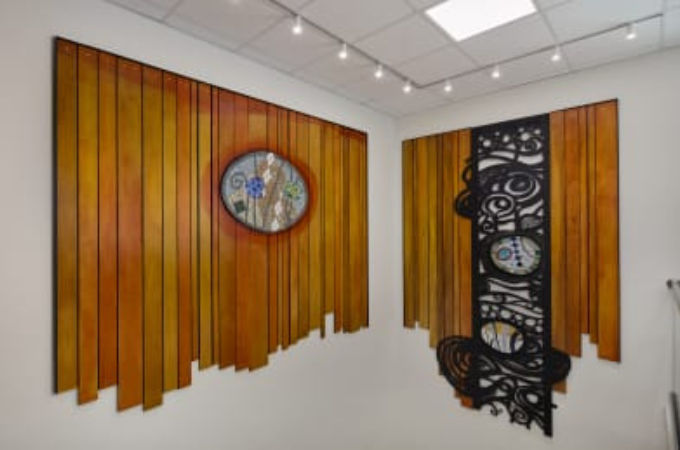
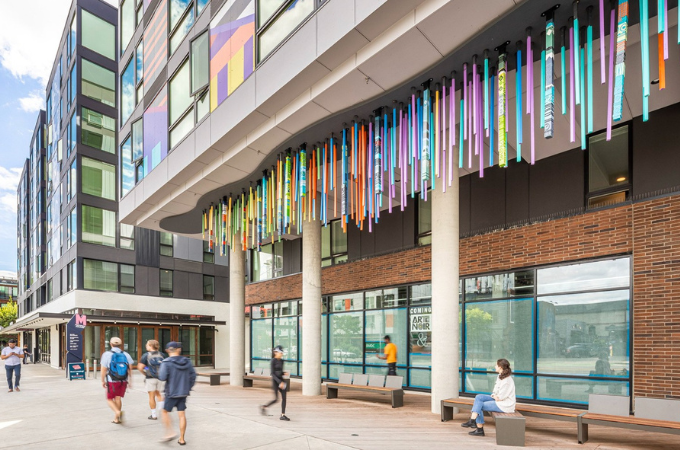
“Color becomes an expression of the times,” Yeggy adds. The light continues to fade, and as the sky slowly turns to dusk, our conversation shifts to another major part of his life: community. “One of my main influences is a 20th-century Austrian artist named Friedensreich Hundertwasser.” Hundertwasser was one of Austria’s most famous artists. Yeggy explains how Hundertwasser was resistant to following just one path: he was a successful visual artist just as much as he was a successful architect and naturalist. His artworks reflect his philosophy, which is based on a harmonious interaction between nature and man. “I can relate to that,” he continues. “I love art, but I also have many diverse interests. I can do more than just paint: I want to utilize art to bring change wherever I can.”
And that he certainly does. Over the years, Yeggy has worked closely with the various communities where he’s lived to bring about positive impact. During his residence in Kenya, for instance, his artwork was used to provoke wider conversations about environmental preservation. In 1996, the artist briefly moved to Eritrea and founded a nationwide awareness campaign called Artists against AIDS, a project involving an ensemble of visual artists, poets, musicians, playwrights and actors. In partnership with the Eritrean Ministry of Health, National Youth Associations and UN agencies, he and his team set out on a tour around the country, spreading messages of awareness about HIV/AIDS using creative, artistic means. “The premise was to engage and sensitize people with dramatic and musical performances, spoken word and memorable visual art on the subject of HIV/AIDS,” Yeggy says animatedly, his enthusiasm clearly evident. “It’s one of my most fulfilling projects, being able to serve my people like that.”
His move to America did not halt his commitment to community: in addition to working full time as an artist and raising his two daughters, Bilen and Nubia (now 20 and 17 respectively), Yeggy volunteers as an art commissioner for the city of Seattle, collaborating with fellow commissioners to advocate for an enhanced city art budget and to promote equity within the city’s arts and culture office. He also reviews a multitude of public art proposals and actively participates in their selection process, often sharing his experiences and skills with younger artists, particularly of African descent and from disadvantaged backgrounds.
But that’s not all: Yeggy is also the art program director and community events organizer at Deldridge Neighborhood Development Association (DNDA), a unique local organization that brings together affordable housing, environment and eco-art through community involvement. In 2023, this role earned him a Golden Apple Award for Excellence in Education. In an interview on PBS, he shared, “We partner with the community, we create trust and we also ask kids and families what they want to learn […] They come up with the ideas and we hire artists to work with the kids. And the result will be beautifying the neighborhood, creating a sense of safety and an enjoyable place to live.” When I bring up the award, he beams and replies, “I was very surprised when they awarded it to me. I’m truly honored and grateful for it.”

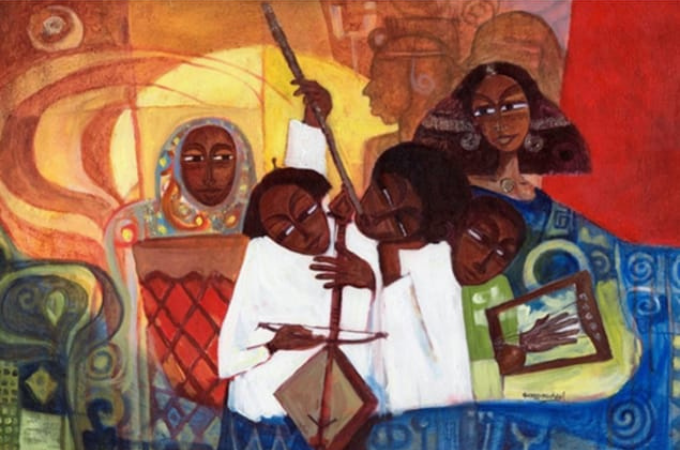
Yeggy is certainly no stranger to awards and accolades. He’s won the Eritrean National Raimok Award two years in a row in the late 90s, he’s been named Artist of the Year in Kenya in 1995, and his paintings have been featured in the prestigious Northwest African American Museum (NAAM) in Seattle. He’s exhibited his work at HUB-Robeson Galleries in Pennsylvania, Kennedy Museum of Art in Ohio, the Institute for Public Knowledge in New York University, and the Social Science Research Council in New York City to name a few. He has also served on the Board of Northwest Folklife Festival, an annual festival of ethnic folk and traditional art, crafts and music. One of his most prominent paintings, Melody of the Horn, was even commissioned by Folklife Festival, copied and sold in high-quality prints and merchandise, and the original collected by one of Seattle’s most prominent businessmen. The painting, which depicts East Africa the way Yeggy sees it, is one of the most recognized works of art among the Eritrean and Ethiopian diaspora in the United States, and beyond.
But the award that means the most to him is the one he won in 2022: the Washington State Governor’s Arts and Heritage Award for Individual Artist of the Year. “The award is in recognition of the cultural legacy contributed to the State,” Yeggy explains to me. “It’s similar to a Lifetime Achievement Award, where it’s the overall body of work that is recognized and celebrated, as opposed to single contributions.” Though I get a sense of how he feels about the achievement, I still press him about it. “What can I say?” he puts it simply, “It reaffirms to me that art can truly make an impact. My work – and as a result I myself – have become a part of the fabric of Seattle’s community. It’s crazy to think that you can’t see Seattle without seeing Yeggy’s artwork in like ten places. It’s humbling.”
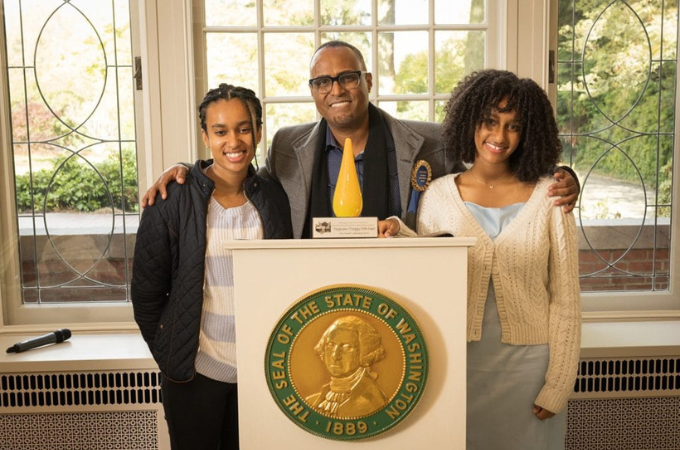
Bilen (left) and Nubia (right)
It’s nightfall by now, and the air is frosty. We are the last people sitting there, so we pay for our drinks and make our way out of the park. As we walk along the street outside, I glance at Yeggy, whose features are imbued with a warm glow from the streetlamp above our path. For some reason, I am curious to hear if he views himself more as an African artist or an Eritrean one. He takes a minute to consider his words before answering, “I’m confident that art is a universal language that can be appreciated and loved by all people, regardless of race, religion or class. And as an artist, I see myself first and foremost as a human being living in the universe. I love both of those communities, and they have been wonderfully supportive, but I never limited myself to a particular niche audience, so my work is enjoyed by all. As an artist, I have to think that I am at the center and everybody gravitates towards my art. I see myself in the universe and art as my stage and everyone else is my audience, able to relate to what my artwork carries. That’s the kind of mindset I would recommend to young artists,” he adds thoughtfully.
Which begs the question: what other advice would he give to artists that are looking to make it too? This time, Yeggy doesn’t miss a beat: “Explore. Don’t be afraid to see the world differently; don’t be afraid to be a part of the community where you live. And create. Just create.”
Before we part ways, I ponder what the future looks like for Yeggy. This makes him crack up, “I can only hope good things!” he jokes, before carrying on, “I am working on a book that showcases my artwork; it’s titled Visual Echoes: Positive Energy through Art and hopefully, will be released this time next year. I am also enjoying witnessing my daughters – whom I playfully call my most beautiful functional art – grow into strong, smart young women, and I’m excited to see how their lives unfold,” he says with fatherly pride. “And as for future projects, I am confident that art and community will carry me through, like always.”


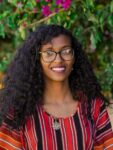

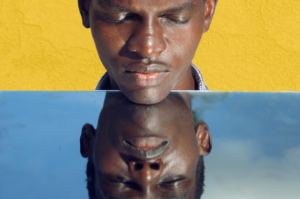

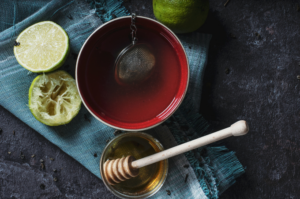



Sador March 25, 2024 04:21
Wowwww it's so great and wonderful. You did such an amazing work. Keep going.